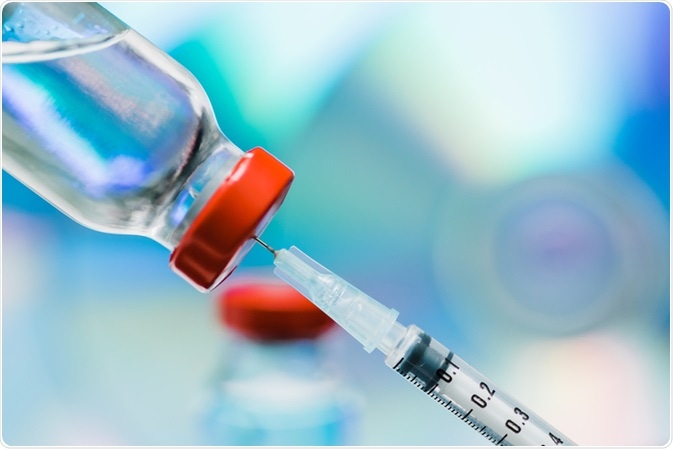Preclinical testing occurs before clinical trials can be conducted. The goal of preclinical trials is to assess the potential toxicity of a new therapeutic drug using either human cell cultures or animals before the medicine can be tested “in vivo” in human participants.
Preclinical testing is required to demonstrate the safety of new vaccines before they can be tested on humans. In most cases, preclinical testing is extensive in order to gain sufficient data to reliably indicate not just the safety of a new vaccine, but also its potential efficacy, toxicity, and pharmacokinetic properties. In addition, preclinical trials allow scientists to model for potential drug-target interactions.
New vaccines, such as those being developed for COVID-19, must go through the rigorous preclinical testing phase as part of a wider, development cycle of a vaccine. Generally, pre-clinical testing happens before the vaccine can be tested in clinical trials, following this, it is put under regulatory review and approval, then finally, manufacturing of and quality control of the vaccine is developed.
Here, we will discuss the steps that lead to a vaccine being approved for preclinical testing and what that involves.
 Image Credit: Rohane Hamilton / Shutterstock.com
Image Credit: Rohane Hamilton / Shutterstock.com
The route to preclinical testing of vaccines
Before any new vaccine goes into preclinical testing, it has already been developed in the lab, usually as part of a four-step process involving pathogen life-cycle & epidemiology, immune control and escape, antigen selection and vaccine formation, and finally, preclinical testing.
To begin with, scientists must acquire knowledge of the structure and behavior of the pathogen they are targeting. Questions pertaining to the route of entry, interaction with cellular receptors, sites of replication, and mechanisms of disease initiation are all addressed prior as the first step of vaccine development. Additionally, data is gathered relating to the demographics of those most affected by the pathogen.
Next, the body’s immune response to the invasion of the target pathogen is studied. Following this, scientists aim to develop a specific antigen that will target the pathogen, remain immunogenic and stable, induce an appropriate immune response, and be suitable for wide-scale production.
Finally, the newly developed vaccine is ready to move onto preclinical testing, which investigates its immunogenicity, safety and efficacy before it is tested in humans.
Preclinical testing protocols
Preclinical testing is conducted with human cell cultures, where scientists investigate how the vaccine impacts these cells using in vitro techniques, or, animal models are used, where a species of animal is selected and the effects of the vaccine are studied in vivo. Preclinical testing collects data that details the development and production of the potential new vaccine. Importantly, data collected from preclinical studies should be sufficient to support the further clinical trials of the vaccine, without strong evidence, the vaccine cannot move on from the preclinical to the clinical phase where human participants will be tested.
If preclinical testing goes down the route of the animal model, it must first provide a clear rationale for testing on animals rather than using human cells in vitro. Studies using animal models must also follow the Good Laboratory Practice (GLP) guidelines as well as any national guidelines pertaining to animal testing.
This stage of vaccine development is essential for establishing the biological, chemical, and physical characteristics of the vaccine that is being developed. It is also a fundamental stage for highlighting any potential risks relating to the use of the vaccine. The results of preclinical tests can help guide the development of subsequent clinical tests.
Preclinical trials should include tests of toxicity, potency, and immunization. The World Health Organization (WHO) advises that toxicity tests should cover the following: evaluate the initial safe dose and subsequent dose escalation schemes; evaluate single and repeat dosage, establish a set of safety parameters; demonstrate potential reversibility of virulence; demonstrate the level of inactivation of the vaccine strains; demonstrate the reversibility to the toxicity of toxoids; and evaluate the potential of the vaccine antigens to cause the release of antibodies that are cross-reactive with human tissues.
In addition, potency tests should also be conducted. These tests should be used for routine batch release. Assays that are suitable for potency tests include challenge models (e.g. intracerebral mouse test used for rabies and pertussis vaccines), and evaluations of infectious units of live attenuated organisms (used for viral vaccines). The WHO recommends that the selected potency assays should mimic the expected function of the vaccine within humans.
Finally, it is also advised that tests of immunization should be conducted in preclinical trials. Often, immunogenicity data is derived from animal models to help scientists to calculate the appropriate doses and routes of administration that should be tested in subsequent clinical trials. Preclinical immunization tests should assess the relevant immune response elicited by the vaccine.
Overall, the main aim of preclinical testing in vaccine development is to ensure that a vaccine is safe enough to be tested in humans and to assess the potential efficacy of the vaccine so that time and money are not wasted running clinical trials on vaccines that may not be effective.
Sources
- Artaud, C., Kara, L. and Launay, O., 2019. Vaccine Development: From Preclinical Studies to Phase 1/2 Clinical Trials. Methods in Molecular Biology, pp.165-176. https://pubmed.ncbi.nlm.nih.gov/31267501/
- Cunningham, A., Garçon, N., Leo, O., Friedland, L., Strugnell, R., Laupèze, B., Doherty, M. and Stern, P., 2016. Vaccine development: From concept to early clinical testing. Vaccine, 34(52), pp.6655-6664. https://www.sciencedirect.com/science/article/pii/S0264410X16309173
- WHO guidelines on clinical evaluation of vaccines: Regulatory expectations. World Health Organization. Available at: https://www.who.int/
Further Reading